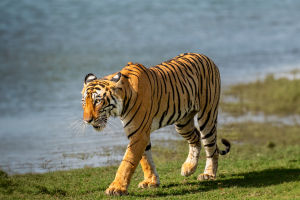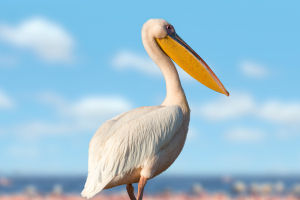The red fox, scientifically known as Vulpes vulpes, is one of the most adaptable and widespread species of foxes. Known for their striking appearance and cunning nature, these animals can be found across a variety of habitats, from forests and grasslands to mountains and urban areas.
In this article, we will take a deeper dive into the physical characteristics, habitat, behavior, and diet of the red fox, offering an engaging and thorough look at this fascinating animal.
Physical Characteristics
Red foxes are medium-sized animals, with a sleek and slender build. Their body length ranges from 45 to 90 centimeters, with their tails making up an additional 30 to 50 centimeters of that length. Their sharp, pointed ears and long, bushy tails are two of their most distinctive features. The coat of the red fox is typically a reddish-orange color, though it can vary significantly, ranging from a yellowish or grayish hue to a deep red. The underside and the tip of their tail are usually white, adding to their eye-catching appearance.
Habitat and Distribution
Red foxes are incredibly adaptable creatures, which is one of the reasons for their wide distribution across the globe. They are native to the Northern Hemisphere but have been introduced to other regions, including Australia, where they have become an invasive species. In their native regions, red foxes can be found in a variety of habitats, including woodlands, grasslands, mountains, and urban areas. They are known to live in forests, scrublands, deserts, and even on the outskirts of human settlements.
These animals are highly resourceful when it comes to shelter. They often make their dens in burrows, which they either dig themselves or take over from other animals, such as badgers. Fox dens are usually located in areas with soft, sandy soil that makes digging easier, and these dens can be quite deep, often extending several meters underground.
Behavior and Life Cycle
Red foxes are primarily nocturnal creatures, which means they are most active during the evening and night. They are solitary animals and tend to live alone except during the breeding season. Foxes communicate with one another through a variety of vocalizations, including barks, screams, and growls. They also use scent marking to communicate their territory and status.
During the breeding season, which occurs in winter, red foxes form pairs, with the female giving birth to a litter of kits in the spring. The kits are born blind and helpless but grow rapidly, learning essential survival skills from their mother. By the time they are about 3 to 4 months old, the kits begin to hunt on their own, although they often stay with their mother for several months before becoming fully independent.
Diet and Hunting Habits
Red foxes are omnivores, meaning they eat both animal and plant-based foods. Their diet is diverse and includes small mammals like rodents, rabbits, and squirrels, as well as birds, insects, fruits, and vegetables. Foxes are opportunistic hunters and will scavenge human garbage if food is scarce. They are known for their cunning hunting techniques, which involve using their keen senses of hearing and smell to locate prey.
Foxes often stalk their prey and make a sudden, quick attack to catch it. They are also excellent diggers, often digging to find small rodents hiding in burrows.
One fascinating aspect of the red fox's behavior is their "surplus killing" or "killing for sport." While they typically hunt only as much as they need to eat, there are occasions when they will take more prey than they can consume, often leaving it behind. This behavior has puzzled scientists, but it is believed to be a natural instinct related to the fox's hunting strategies.
Conservation Status
The red fox is currently not considered endangered, and it has a stable population across much of its range. In fact, it is classified as a species of "Least Concern" by the International Union for Conservation of Nature (IUCN). However, in some areas, red foxes face threats from habitat loss, hunting, and human-wildlife conflict. In places where they have been introduced, such as Australia, red foxes are considered an invasive species and a threat to native wildlife.
Fun Facts About Red Foxes
- Incredible Jumpers: Red foxes are skilled jumpers, able to leap over fences and other obstacles with ease.
- Sharp Ears: Their large, pointed ears are not just for hearing; they help to regulate their body temperature.
- Adaptability: Foxes have adapted to living in urban environments, often scavenging food from human settlements.
The Red Fox's Enduring Charm
The red fox is a remarkable animal that has captured the imaginations of people for centuries. Whether in the wilds of a forest or the edges of a city, these clever and beautiful creatures continue to thrive across the globe. As we continue to learn more about them, we come to appreciate their adaptability, intelligence, and resourcefulness.
If you ever have the chance to observe a red fox in the wild, take a moment to marvel at this exceptional species!
What do you think about red foxes? Have you encountered one in your travels? Let us know in the comments!
Things you need to know about RED FOXES!
Video by A Shot Of Wildlife


